OP-ED
The Kildare Road Spring: A place buried under concrete
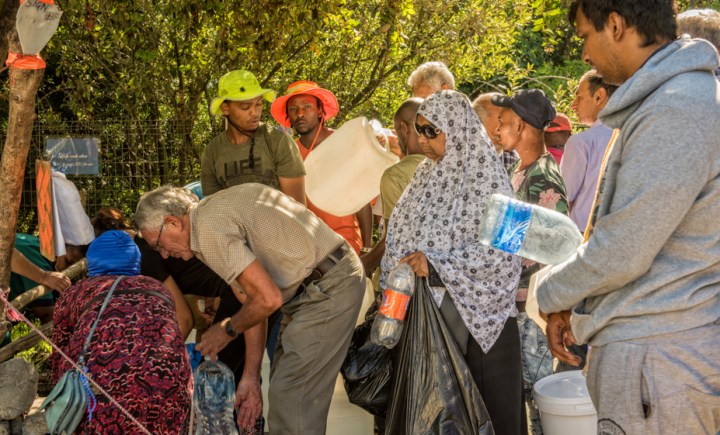
During the water crisis, the Kildare Road spring became one of those rare spaces where a diverse public came together in this deeply divided city. People from all over the city came to collect water at the spring to lower their monthly water bills, save municipal water in a time of scarcity, or because they enjoyed the sweet taste and purity of the water. Some came there as a ritual of remembrance and to reminisce about when they or their relatives lived in Newlands Village before the forced removals of the 1960s. It was a place that served many different needs for many people.
Once #DayZero was called off and the winter rains arrived, Capetonians seemed to experience amnesia about the public panic that enveloped them barely a few months earlier. Yet, in early 2018 the inevitability of #DayZero had gripped the city, and the more affluent residents were busy buying JoJo tanks, drilling boreholes and collecting shower water in plastic basins to flush their toilets.
Conversations among the chattering classes almost inevitably turned to the water crisis, and saving water came to be seen as the ultimate act of civic virtue, with Capetonians drastically reducing consumption from 1.2 billion litres per day in 2015, to around 510 million in 2018. What drove this unprecedented behavioural change was fear and panic.
Whereas the smooth functioning of water and sanitation infrastructure had once been taken for granted by the middle classes in the suburbs, there was now a real possibility of total breakdown. For many commentators and experts, the solution was seen to be primarily a technological one that involved dams, groundwater abstraction, recycling and desalination plants. But there was also a cultural, historical and sociological angle to this crisis.
During the height of the worst drought Cape Town had experienced in a century, the mainstream media represented the water crisis as “the great leveller”, with Capetonians coming together in a time of adversity to save water and avoid #DayZero. South African and international journalists also made much of the community spirit at the queues at public springs where residents collected water. These images of the “rainbow nation” standing stoically in line to collect water made it onto the pages of The Guardian, New York Times, Time Magazine, National Geographic and numerous other newspapers as well as Al Jazeera, BBC and CNN television reports. These representations of community solidarity were oddly reminiscent of media images of “Mandela magic”, when South Africans stood in long queues as one nation to vote in the 1994 democratic elections. At first glance, it had indeed seemed as if the looming crisis had levelled the playing field. Now even big business, commercial farmers and the middle classes and affluent appeared vulnerable and uncertain how long the water and sanitation system would continue functioning.
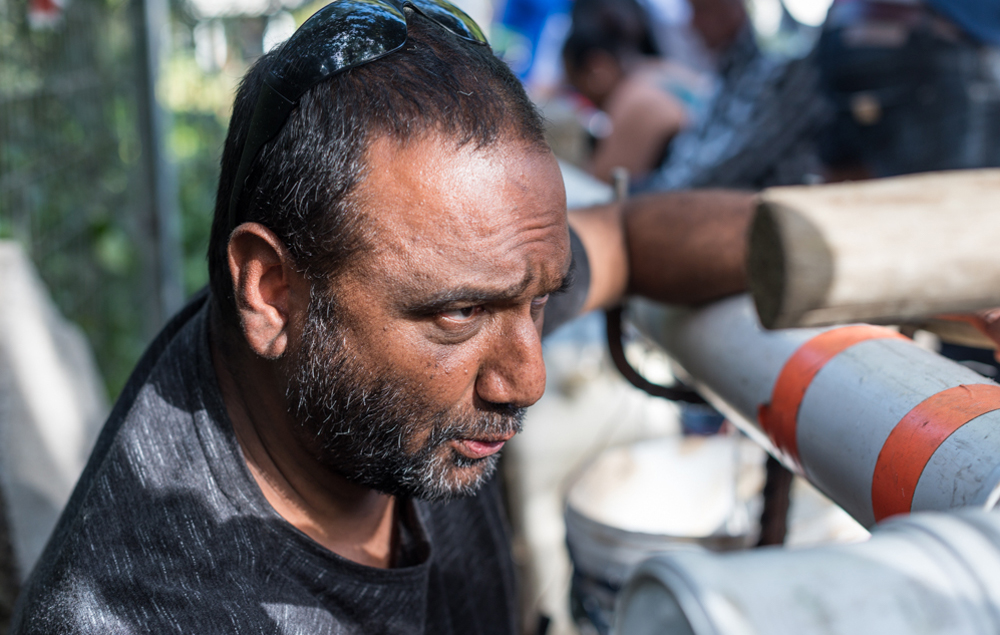
The crisis also brought to the surface the deep race and class divides and infrastructure inequalities in this post-apartheid city. For those living in Cape Town’s informal settlements, who use only 4.7% of the city’s total domestic water, the daily labour of collecting buckets of water at communal taps meant that they were already complying with the 50 litres per day per person allowance.
It was the middle classes in the suburbs, who consume 70% of the domestic water with their showers, pools, dishwashing machines and lawns, who were the problem. For the most affluent section of the population, going off the grid with their boreholes and well points meant that they could entirely bypass the #DayZero scenario. It was within this context of #DayZero and water infrastructure inequality that thousands of Capetonians lined up to collect water at the springs in Newlands and Kalk Bay.
In January 2017, while waiting my turn to fill my 25 litre containers at the Kildare Road spring in the middle class suburb of Newlands, I struck up a conversation with a forty-something-year-old man, who turned out to be Riyaz Rawoot, a sports physiotherapist. I learnt that it was Riyaz who had constructed the improvised PVC pipe with 26 holes at the spring that allowed over two dozen people to collect water at the same time. That evening, Riyaz and I attended a meeting at Community House in Woodstock convened by the Water Crisis Coalition (WCC), a recently formed anti-privatisation civic organisation that was mobilising Cape Town’s poor and working class communities against the City of Cape Town’s water policies, levies and tariff hikes.
The WCC activists were also against the City’s decision to construct multibillion-rand desalination plants and install water management devices in households that exceeded the allowance. All of these measures were seen to be part of the City’s water privatisation agenda. In fact, the activists insisted at the meeting that #DayZero was itself a myth conjured up to promote the further commodification of water. These WCC activists were also determined to defend public access to the springs in Newlands at a time when the City seemed determined to close them. It appeared as if the #DayZero crisis, with the threat of the total breakdown of the water supply system, had created the conditions for the emergence of a contentious politics of water in Cape Town. It had also created the conditions for activists and ordinary citizens to learn about the technical aspects of water supply and demand that are typically confined to water experts and engineers.
Alongside of these new forms of “water literacy” was a rethinking of water as a public good, a commons. At the centre of many of these developments was the Kildare Road spring and Riyaz Rawoot’s PVC pipe, which became the mundane material object around which competing views on water, property, rights and governance were articulated.
During the water crisis, the Kildare Road spring became one of those rare spaces where a diverse public came together in this deeply divided city. People from all over the city came to collect water at the spring to lower their monthly water bills, to save municipal water in a time of scarcity, or because they enjoyed the sweet taste and purity of the water. Some came there as a ritual of remembrance and to reminisce about when they or their relatives lived in Newlands Village before the forced removals of the 1960s. It was a place that served many different needs for many people.
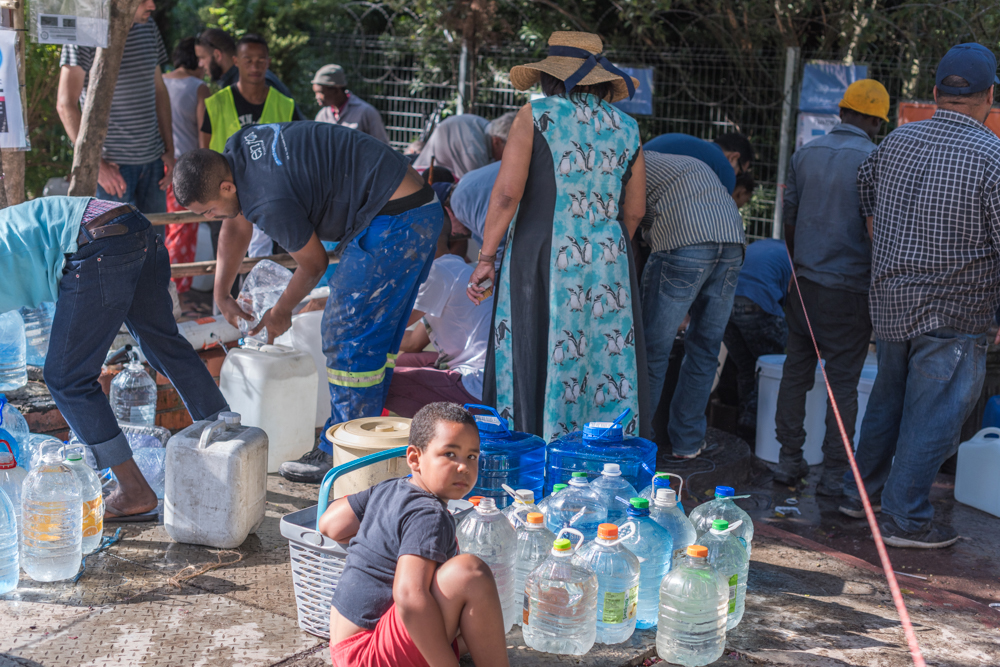
Then, on 23 May, the City of Cape Town closed the spring, covered the water point with concrete and established a new collection point one kilometer away next to the Newlands public swimming pool. The local councillor and local Newlands residents had vociferously called for this for months on the grounds of traffic congestion, noise and the influx of “outsiders’, mostly from the poor and working class areas of the Cape Flats.
The PVC pipe structure and the water that flowed through it had created a new, diverse social space, one that was at odds with the local residents’ desire to restore “order” in their leafy suburb. So what can we learn from the very different responses of Capetonians to this banal, improvised pipe structure?
Public discourse and media reports on Cape Town’s water crisis tended to focus on the technological dimensions of the problem, for instance, that government ought to have built more dams and initiated desalination, recycling and aquifer water extraction programmes much earlier. Journalists even reported on an unlikely technological solution proposed by a South Africa salvor and a Swiss water technology company to tow icebergs from Antarctica to Cape Town.
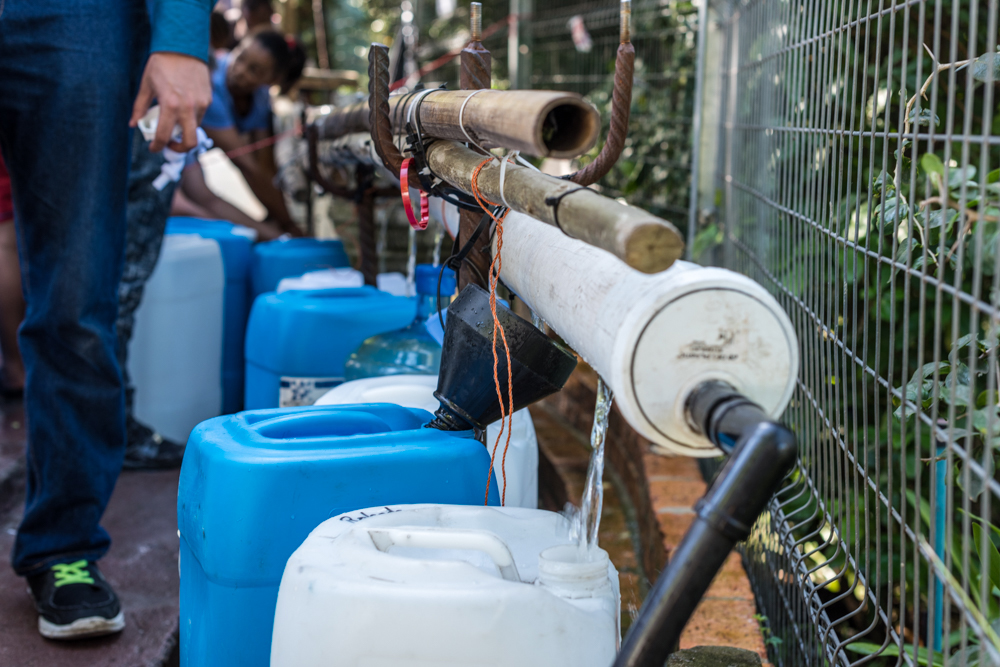
Yet, there is a vast literature that shows that water supply is seldom simply a technological matter. As was mentioned earlier, Nikhil Anand has noted how Mumbai slum dwellers use social, political, moral and hydrological pressure to “coax” water through the pipes. This pressure often involves lobbying and leveraging state officials and politicians, as well as using social and religious affiliations to access water resources and technologies. Anand calls these various kinds of pressure the “politechnics of water supply”. Riyaz Rawoot used similar tactics to get water to flow through his PVC pipe.
It was the Rawoot family’s 80-year old family ties to Newlands that first drew Riyaz to the spring. As a Sufi, he was also attracted to its pure water and the serenity of the space. As he told me, “the setting was wonderful, with the green trees and the river flowing, and the sound of the water, the sky, butterflies, dragonflies, birds all in this little cul-de-sac, and I loved it”.
On his numerous visits to the spring, he had noticed that the water point was muddy and it was often awkward for people to fill their containers from the single water point. He then began to consider different solutions for upgrading the area to make it more user-friendly. His first step was to pave the area with concrete, using his own financial resources to do this. With #DayZero and the massive spike in the numbers of water collectors, he began to draw on his lay-engineering skills, creativity and passion for solving social and technological puzzles to come up with an improved solution.
From around 100 people coming to the spring on a daily basis, by early 2018 thousands were collecting water there. People came from all over the city, from early in the morning to late at night. With these increased numbers, Riyaz began tinkering with his PVC pipe until it had 26 water points. The pipe, which flowed strongly and smoothly, was put together with steel props, corks, string, and plastic and wire cables.
Rawoot also bought bright orange bibs for the “water porters” who eked out a meagre livelihood carting water containers on trolleys for tips. He also tried to create a quiet, neat and orderly atmosphere at the spring, working tirelessly to address the concerns of elderly residents at Creswell House immediately adjacent to the spring, some of whom complained about the traffic, noise and large crowds.
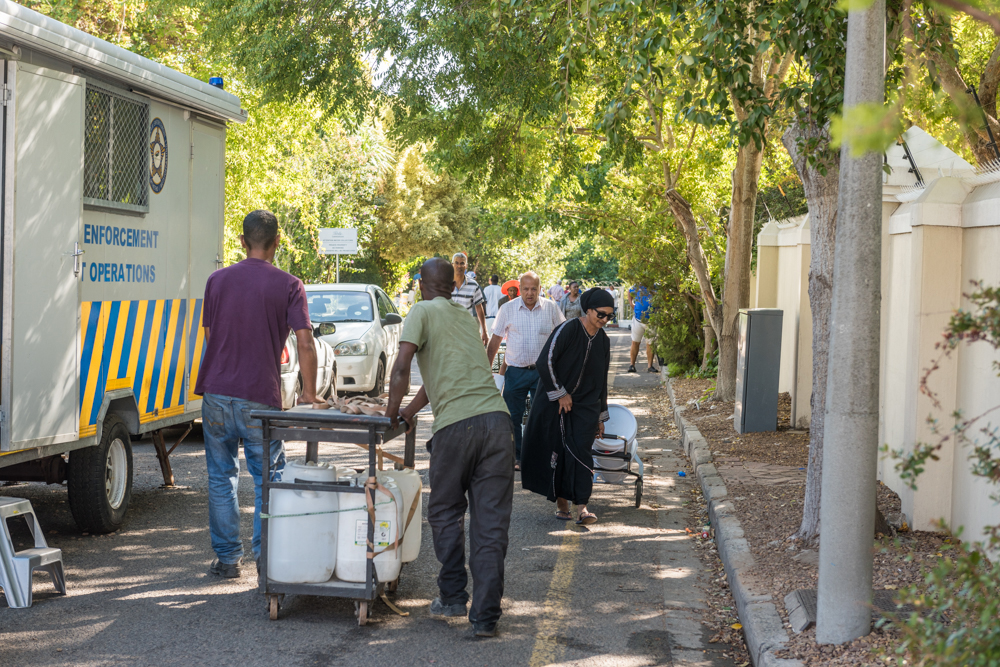
He also kept on the good side of the police and traffic officials who controlled access to the space. Managing the inevitable conflicts and tensions that surfaced at the spring was another one of his self-designated tasks. Instead of verbally instructing people to behave with consideration towards each other, he used ropes to channel movement along the lines to the water points, and made posters with didactic messages to encourage users to treat each other with courtesy and respect: “Help each other. 25 litres for you, 25 litres for me”.
As he put it me, “Rather than trying to tell people to behave properly, I let the ropes and posters do the talking.”
He also put up posters asking for donations for the nearby children’s hospital. Through this citizen-driven initiative, he cultivated a communal culture of co-operation that allowed both social relations and the water to flow smoothly.
By covering the spring with concrete, the City destroyed a creative social experiment born in a time of crisis and public panic. By criminalising Rawoot’s improvised pipe structure, and threatening him with having to pay the costs for dismantling it, the City failed to acknowledge and celebrate an innovative act of socially responsible citizenship. It also failed to anticipate how closing a historically and culturally significant site could trigger anger and resentment, reminding many Capetonians of their historical experiences of forced removals of the 1960s.
At the heart of this has been a failure to recognise that the story of Kildare Road spring is about much more than simply technical matters of pipes, parking and noise management. It is a story about the history of a place where, for over a century, people have come to collect water. The creative act of constructing the PVC pipe structure was the catalyst for re-animating collective memory and historically sedimented forms of sociality that crossed the race and class barriers of this deeply divided city.
As Anand has shown us, getting water to flow through pipes often involves much more than hydrological pressure – it also may require taking cognisance of the political, moral, social and cultural dimensions of everyday life. DM


















 Become an Insider
Become an Insider